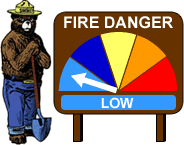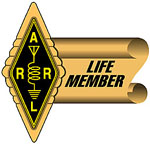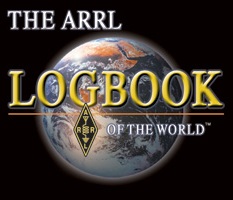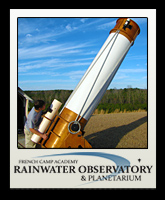VHF/UHF Weak Signal Mentors
I have always had an interest in the VHF/UHF Weak Signal segment of our Ham Radio hobby. Back in my younger days I worked a lot of 50 MHz, 144 MHz, 220 MHz, and 432 MHz. I worked some EME (Earth-Moon-Earth, or Moon Bounce) during those days back in the 70's and early 80's. You may ask what do I mean by "VHF/UHF Weak Signal"? What I am talking about is mainly working in the CW and SSB segments of these bands over great distances or running EME. I worked satellites during those times, also. I had several great mentors in the VHF/UHF Weak Signal arena. George Chaney, W5JTL (SK) of Vicksburg, MS; Rex Turner, W5RCI (SK) of Marks, MS; Paul Wilson, W4HHK (SK) of Collierville, TN; and George Tew, NC5Y (SK) of Jackson, MS were my mentors in this area of our hobby.
George Chaney, W5JTL (SK), was the District Attorney in Warren County, where Vicksburg, MS is located. He was the ham that introduced me to moon bounce. George was the one that brought home the need for using good connectors on my coax and hardline. He wrote several articles about this for QEX and made me a believer in using N-Connectors. He explained to me how the N-Connector had less loss at VHF/UHF and that you did not get an impedance bounce out of them. They are also more water resistant than a PL-259. Some people complain about soldering an N-Connector, but to me it is much simpler to use a pencil iron instead of a gun to solder them. When you start counting up all the connections in your feedline, a PL-259 can induce a lot of loss in your transmitting and receiving system. I still do not understand why the amateur radio industry has not gone solely to N-Connectors. Yes, they are more expensive than a PL-259, but at VHF and above frequencies they give you a lower loss and you do not see the impedence bounce that you would with a PL-259. They would have negligable effect at HF frequencies, but they would give you better water resistance. George had a moon bounce array with K2RIW design antennas on 144 and 432 MHz and was active on that segment of the band. He was a good friend above all!
Rex Turner, W5RCI (SK), lived in Marks, MS, up in the Mississippi Delta. Rex owned the Turner Appliance Store there and I first met Rex in 1974 during my brief stay in Marks. Rex was one of the pioneers in long haul weak signal, tropo, meteor scatter, and EME. He was involved in this for over 50 years. Most of his equipment he built or modified to work on the amateur bands. I would dare say that most hams in Mississippi and surrounding areas do not even know who he was, much less his accomplishments in this part of our hobby. In the book "Beyond Line of Sight", Rex is mentioned many times. Rex taught me the art of operating at these frequencies, "Sitting for hours on end listening to static!" Of course back in those days there were not any personal computers, clusters, or internet to spot stations. DXers and VHFers alike had to sit in front of the radio and spin the dial and listen. I made several trips to the Central States VHF Conference with Rex over the years. Most people that had worked Mississippi on VHF/UHF weak signal or EME, had worked Rex. He was one of the few that were active on 220 back in those days. We truly lost a pioneer in weak signal work when we lost Rex. You can view a tribute to Rex on YouTube by clicking here: https://www.youtube.com/watch?v=tYACXqb8tkc
Paul Wilson, W4HHK (SK) of Collierville, TN was a big influence on me, also. As a young guy I looked at his station with awe. I think Paul was a huge influence on everyone that met him. When not on EME or some of the Microwave bands, Paul would join us on 144 or 432 roundtables. I think I had some of the true weak signal pioneers that I was able to lend an ear to on almost a daily basis. Paul was a giant in the VHF through Microwave world of amateur radio. Back in the 1950,s, Paul and W2UK from New Jersey made the first 144 MHz meteor scatter contact over a 950 mile path. In the EME arena, Paul was one of the first 2 meter EME pioneers and later in 1965 he was one of the first to make an EME contact on 432. In 1970 he made the first 2304 MHz EME contact with W3GKP. But what was really amazing was to see the inside of his shack and then the monster 18 foot dish mounted on the big platform in his yard. It was featured as the cover to the March 1965 QST magazine. Paul was a true "Ham's Ham!" He was a very technical minded individual and put it into application. I know listening to Paul and Rex talk some nights the topics got very deep and very detailed and would sometimes fly right over my head, but when I would ask for an explanation, he could put it into a context that I could understand and apply. Paul was admired by all that knew him! It was an honor for me to know him!
George Tew, NC5Y (SK), was an engineer with Bell South Telephone Company. George liked to work the satellites and would hop on the weak signal bands with us. He was usually the first one around to try out new modes or rigs. He was the one that got me on Packet Radio when the first kits came out. I remember when he bought his Yaesu FT-736R for satellite work, he bought the 220 module for it, also. That was the premiere VHF/UHF rig at that time. George and I were the only two around on Packet Radio for a good while, and then a ham on the coast finally got on. My antennas were at 115 feet and I was running a pair of 4CX250B's with a switching GaAsFET Preamp at the top of the tower. So George would connect to Pat, 150 miles away on the coast, through my station. I always got tickled with George, he would get interested in some new facet in ham radio and would spend hours trying to convince me that I needed to buy the same thing so he would have someone to talk to. Back in the days before the IBM PC came out, we were all running some kind of home computer. I had built several small computers and was running a CP/M computer. George bought an Apple II and tried talking me into buying one, but I bought a Radio Shack Color Computer instead. Our conversations always consisted of George telling me what I needed to buy and I always had a good chuckle afterwards.
I do not think that a young ham could ask for a better set of weak signal mentors!


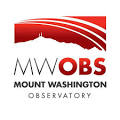
 Mt Washington Wx CAM
Mt Washington Wx CAM
